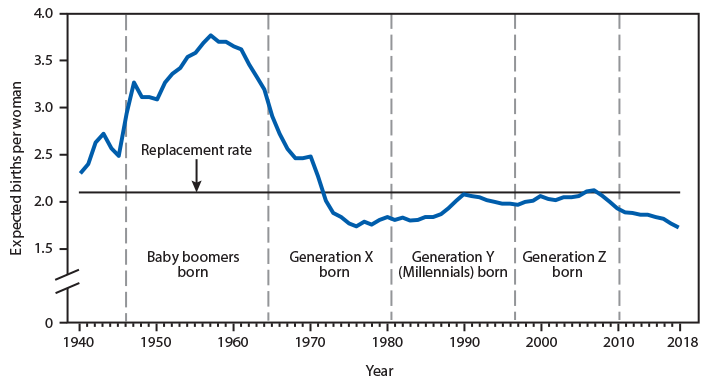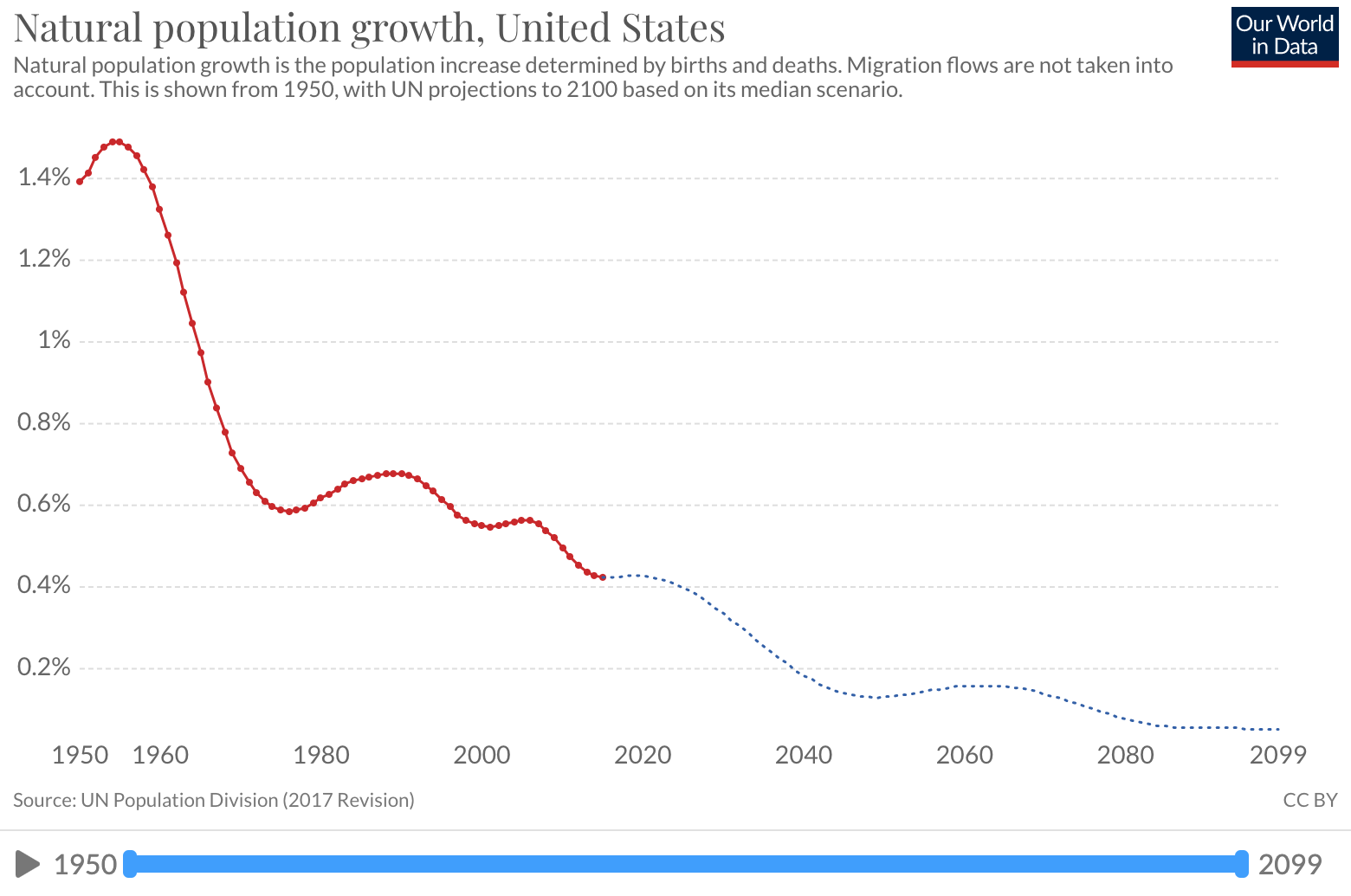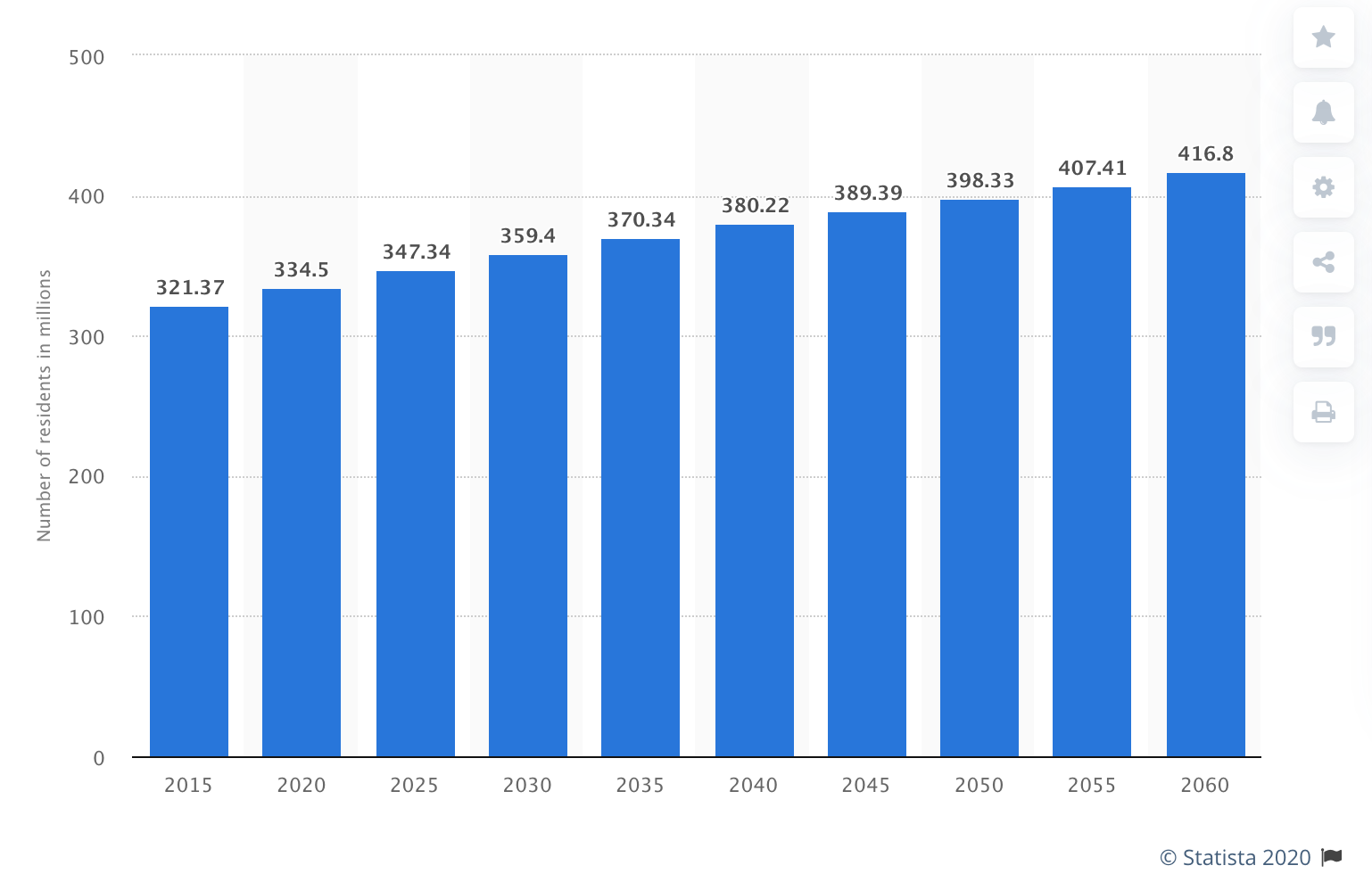The rate hit an all-time low of 1.73, which is well below the replacement rate of 2.1 births per woman. Despite this, the nation is projected to add roughly 65 million to the total population over the next 30 to 40 years, representing an increase of about 19 percent.
There's been much hand-wringing (and flat-out denial) in some circles about the demographic crisis facing Japan and several European countries. The citizens of both aren't having enough children to replace themselves. Even after allowing for immigration, several countries are already shrinking. One Japanese minister pointed his finger at childless couples and got into trouble. Apparently, one isn't supposed to say obvious things like that in Japan.
The same pattern is true for the United States. The latest data from the CDC show that the fertility rate has hit an all-time low of 1.73 births per woman, which is well below the replacement rate of 2.1.

Despite this, nobody is talking about a demographic crisis (yet) in the United States. In fact, natural population growth models (which are determined solely by births and deaths and exclude immigration) still project the U.S. to be growing by the year 2100.

How? Because births will still outpace deaths for the foreseeable future. Technology is keeping us alive longer, so even with a birth rate below the replacement rate, a population can still grow for a while. Currently, there are roughly 3.8 million births but only 2.8 million deaths in the U.S. each year, meaning that we naturally grow by about 1 million people. However, this number will shrink and eventually turn negative over time if the fertility rate doesn't change.
Of course, births aren't the only source of new people. There's also immigration. Each year, the U.S. admits just over 1 million immigrants ("lawful permanent residents"). Combined with natural population growth, the U.S. is currently adding about 2 million human beings each year. When the Census Bureau crunches the numbers (including the projected decrease in natural population growth), it estimates that the U.S. population will be just shy of 400 million by the year 2050.*

So despite falling fertility, the U.S. is not facing a demographic crisis. But the story could be quite different several decades into the future.
*Note: More recent Census data project that the U.S. will hit 400 million in the year 2058.

